
- Subject:
- Life Science
- Material Type:
- Module
- Author:
- Urbi Ghosh
- Date Added:
- 08/05/2019



Learning the Object Oriented Programming concepts such as classes, interfaces, overriding, and inheritance.

Anatomy and Physiology is a dynamic textbook for the two-semester human anatomy and physiology course for life science and allied health majors. The book is organized by body system and covers standard scope and sequence requirements. Its lucid text, strategically constructed art, career features, and links to external learning tools address the critical teaching and learning challenges in the course. The web-based version of Anatomy and Physiology also features links to surgical videos, histology, and interactive diagrams.


This course introduces representations, techniques, and architectures used to build applied systems and to account for intelligence from a computational point of view. This course also explores applications of rule chaining, heuristic search, logic, constraint propagation, constrained search, and other problem-solving paradigms. In addition, it covers applications of decision trees, neural nets, SVMs and other learning paradigms.
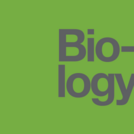
Biology is designed for multi-semester biology courses for science majors. It is grounded on an evolutionary basis and includes exciting features that highlight careers in the biological sciences and everyday applications of the concepts at hand. To meet the needs of today’s instructors and students, some content has been strategically condensed while maintaining the overall scope and coverage of traditional texts for this course. Instructors can customize the book, adapting it to the approach that works best in their classroom. Biology also includes an innovative art program that incorporates critical thinking and clicker questions to help students understand—and apply—key concepts.
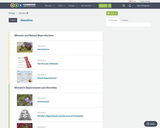
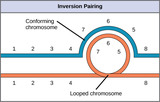
By the end of this section, you will be able to:Describe how a karyogram is createdExplain how nondisjunction leads to disorders in chromosome numberCompare disorders caused by aneuploidyDescribe how errors in chromosome structure occur through inversions and translocations

By the end of this section, you will be able to:Discuss Sutton’s Chromosomal Theory of InheritanceDescribe genetic linkageExplain the process of homologous recombination, or crossing overDescribe how chromosome maps are createdCalculate the distances between three genes on a chromosome using a three-point test cross


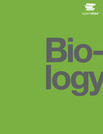
Biology is designed for multi-semester biology courses for science majors. It is grounded on an evolutionary basis and includes exciting features that highlight careers in the biological sciences and everyday applications of the concepts at hand. To meet the needs of today’s instructors and students, some content has been strategically condensed while maintaining the overall scope and coverage of traditional texts for this course. Instructors can customize the book, adapting it to the approach that works best in their classroom. Biology also includes an innovative art program that incorporates critical thinking and clicker questions to help students understand—and apply—key concepts.
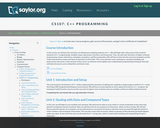
The student will learn the mechanics of editing and compiling a simple program written in C++ beginning with a discussion of the essential elements of C++ programming: variables, loops, expressions, functions, and string class. Next, the student will cover the basics of object-oriented programming: classes, inheritance, templates, exceptions, and file manipulation. The student will then review function and class templates and the classes that perform output and input of characters to/from files. This course will also cover the topics of namespaces, exception handling, and preprocessor directives. In the last part of the course, the student will learn some slightly more sophisticated programming techniques that deal with data structures such as linked lists and binary trees. Upon successful completion of this course, students will be able to: Compile and execute code written in C++ language; Work with the elementary data types and conditional and iteration structures; Define and use functions, pointers, arrays, struct, unions, and enumerations; Write C++ using principles of object-oriented programming; Write templates and manipulate the files; Code and use namespaces, exceptions, and preprocessor instructions; Write a code that represents linked lists and binary trees; Translate simple word problems into C++ language. (Computer Science 107)
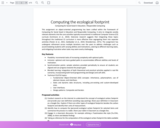
This assignment on object-oriented programming has been crafted within the framework of Computing for Social Good in Education and Responsible Computing. It aims to integrate socially relevant elements into the core activities typically encountered in traditional Computer Science (CS) curricula. Extensive research suggests that integrating these topics throughout the traditional CS curriculum is more effective than segregating them into separate activities. The assignment has undergone refinement across multiple iterations over the years to address challenges such as accommodating students with varying abilities and motivations, catering to different learning styles, and mitigating frustration when tasks may seem overly challenging.
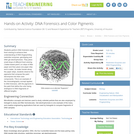
Students perform DNA forensics using food coloring to enhance their understanding of DNA fingerprinting, restriction enzymes, genotyping and DNA gel electrophoresis. They place small drops of different food coloring ("water-based paint") on strips of filter paper and then place one paper strip end in water. As water travels along the paper strips, students observe the pigments that compose the paint decompose into their color components. This is an example of the chromatography concept applied to DNA forensics, with the pigments in the paint that define the color being analogous to DNA fragments of different lengths.

This course is a fast-paced introduction to the C and C++ programming languages, with an emphasis on good programming practices and how to be an effective programmer in these languages. Topics include object-oriented programming, memory management, advantages of C and C++, optimization, and others. Students are given weekly coding assignments and a final project to hone their skills. Recommended for programmers with some background and experience in other languages.
This course is offered during the Independent Activities Period (IAP), which is a special 4-week term at MIT that runs from the first week of January until the end of the month.
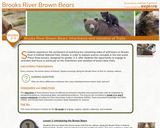
Students experience the excitement of watching live-streaming video of wild bears on Brooks River in Katmai National Park, Alaska, in order to explore science concepts in the real world. These three lessons, designed for grades 3–5, offer students the opportunity to engage in activities that focus in particular on the inheritance and variation of brown bear traits.

This is a foundation subject in modern software development techniques for engineering and information technology. The design and development of component-based software (using C# and .NET) is covered; data structures and algorithms for modeling, analysis, and visualization; basic problem-solving techniques; web services; and the management and maintenance of software. Includes a treatment of topics such as sorting and searching algorithms; and numerical simulation techniques. Foundation for in-depth exploration of image processing, computational geometry, finite element methods, network methods and e-business applications. This course is a core requirement for the Information Technology M. Eng. program.
This class was also offered in Course 13 (Department of Ocean Engineering) as 13.470J. In 2005, ocean engineering subjects became part of Course 2 (Department of Mechanical Engineering), and the 13.470J designation was dropped in lieu of 2.159J.